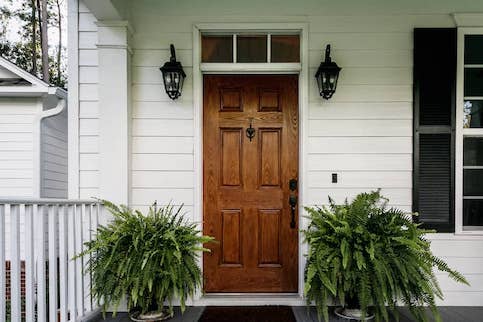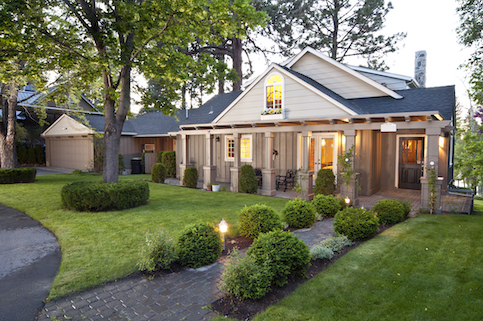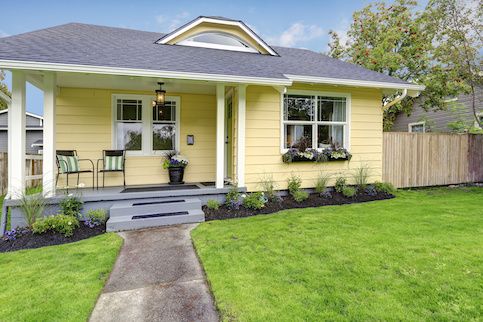Down Payments: Explained For Beginners

Navigating the path to homeownership involves critical decisions, and the down payment is no exception. It’s the initial stake that sets the foundation for your purchase. The down payment impacts your mortgage size, interest rate, overall loan costs, and equity.
What Is A Down Payment?
A down payment is the initial lump sum you pay to secure a loan for a purchase you can’t make with cash. The more you put down, the less the lender has to lend to you, which can help improve your loan terms.
For example, if you’re buying a $300,000 house and you make a 15% down payment, you would pay $45,000 upfront. This way, you take out a $255,000 mortgage, reducing your loan size and making homeownership less expensive over time.
Many people think that a 20% down payment is required. But you can get a mortgage with as little as 3%, 3.5% or even 0% – depending on the loan. Remember, a down payment of less than 20% of the home’s purchase price on a conventional loan means you’ll pay Private Mortgage Insurance (PMI). This additional cost protects the lender in case of default. However, a down payment of at least 20% allows you to avoid this expense.
A down payment is also one of the most significant steps when purchasing a house for the following reasons:
- Financial commitment: Making a substantial down payment demonstrates to the lender that you are financially committed to the purchase and the property.
- Building equity quickly: A larger down payment means you start with more equity in the property. Doing so gives you a stronger financial position and means you’re closer to outright ownership.
- Less risk for the lender: A substantial down payment can make your lender more inclined to offer you better terms, such as a lower interest rate, as they see you as a lower-risk borrower.
- Lower monthly payments: With a larger down payment, your monthly mortgage payments will be smaller. This way, more of your income can go toward other expenses or investments.
- Long-term financial stability: Putting down a significant amount upfront indicates financial stability. It can also reduce the likelihood of becoming “house poor,” where too large of a portion of your income is tied up in housing costs.
Get matched with a lender that will work for your financial situation.
See What You Qualify For
Home Purchase
Home Refinance
Tap Into Equity
How Much Down Payment Do You Need For A House?
Your minimum down payment will depend on the type of loan you’re applying for because lenders and government programs have different requirements. Remember, most home buyers purchase homes with conventional loans, but other financing options are available. Here are the loans you might qualify for and their down payment conditions:
- Conventional loan: These loans don’t have backing from a governmental program. As a result, they usually have stricter standards for credit scores, debt-to-income ratio (DTI), and down payments. Specifically, first-time home buyers must provide a down payment of 3% or higher, and experienced home buyers must put down at least 5%.
- Federal Housing Administration (FHA) loan: FHA loans are backed by the FHA. Private lenders offering these loans follow governmental regulations to provide loans to borrowers with weaker credit and lower incomes. Because of the more flexible loan requirements, FHA loans require a 3.5% down payment for all buyers.
- Department of Veterans Affairs (VA) loan: VA loans are for veteran and active-duty military members and eligible surviving spouses. These loans have minimal financial hurdles and don’t typically require a down payment.
- U.S. Department of Agriculture (USDA) loan: USDA loans are for borrowers in qualifying rural areas. These loans have moderate financial requirements, and borrowers don’t have to have a down payment to qualify.
Should You Save For A Larger Down Payment?
Home buyers gain several advantages by putting more than the minimum down when purchasing a house. Understanding them can help you plan effectively when considering your finance.
Lower Monthly Payments
When you make a larger down payment, you reduce the principal amount you finance with a mortgage. This way, your monthly mortgage payments are lower because you’re repaying a smaller sum over the life of the loan.
Here’s a comparison of two scenarios using our mortgage calculator to clarify the point:
- Scenario A: You put 20% down on a $300,000 house ($60,000), leaving you with a $240,000 mortgage.
- Scenario B: You put 5% down ($15,000), resulting in a $285,000 mortgage.
You have a 30-year loan with a 6% interest rate. A 20% down payment results in a monthly payment of $1,438.92. On the other hand, a 5% down payment results in a monthly payment of $1,708.72. These numbers don’t include PMI, which will add even more onto the mortgage payment with 5% down.
Remember, you can plug numbers into the mortgage calculator based on your situation to generate estimated monthly payments with different down payments.
Save On Interest
Interest is the cost of borrowing money. By reducing the amount you need to borrow via a larger down payment, you reduce the amount of interest that accrues over the life of the loan.
Consider the same two scenarios as before (Scenario A and B). Over the life of the loan, you will pay less in interest in Scenario A because you’re borrowing $45,000 less. The lower principal amount will save you tens of thousands of dollars in interest costs over the life of the loan.
Build Equity Faster
You can measure home equity by comparing your mortgage amount to the current market value of your home. When you make a larger down payment, you start with more equity from day one. This advantage occurs because your loan-to-value ratio (LTV) decreases, indicating a lower debt you owe on the home compared to how much the home is worth. In other words, your down payment grants you more ownership from the moment you purchase it. Additionally, equity is advantageous because you can borrow against it to afford home repairs and personal expenses.
Save On Private Mortgage Insurance
Remember, reaching 20% equity through a down payment eliminates private mortgage insurance (PMI) from conventional loans. Lenders require PMI for borrowers with equity under this threshold, creating an additional cost for the borrower.
Avoiding PMI can save you hundreds of dollars per month. Therefore, if you can’t make a 20% down payment, it’s still a good idea to put as much down as possible. This way, your mortgage payments help you reach 20% equity faster, shortening how long you pay PMI.
Get More Favorable Loan Terms
Lenders consider borrowers with larger down payments lower risk because the debt is smaller. This situation can lead to more favorable loan terms, such as a lower annual percentage rate (APR) or a shorter repayment period.
Down Payment Assistance
Down payment assistance programs are available for borrowers struggling to afford this substantial upfront cost of homeownership. Borrowers can obtain help for the down payment and closing costs through grants, forgivable loans, and deferred payment loans.
Typically, borrowers who are first-time home buyers or have lower incomes can qualify for assistance. Local and federal organizations from the government and private sector offer this kind of help, so it’s best to check organizations in your area for information. Not all lenders accept all programs, so it’s also helpful to call your lender to determine which program they accept.
Down Payment FAQs
Here are the answers to some frequently asked questions about down payments to help you during your home buying journey.
Why do lenders require down payments?
Lenders require down payments to mitigate risk by ensuring borrowers have a financial stake in the home purchase. The down payment demonstrates a borrower’s ability to save and manage finances responsibly, reducing the likelihood of default. Additionally, a down payment acts as a buffer for lenders in case of a drop in property value, providing them with a greater chance of recovering their investment.
Do you always need to put 20% down for a house?
Putting down 20% for a house is not necessary, but doing so allows you to avoid Private Mortgage Insurance (PMI) on conventional loans, reducing your monthly housing costs. In addition, it helps you secure favorable loan terms, reducing your mortgage expenses further. Many lenders accept down payments as low as 3% – 5% for conventional mortgages. However, a larger down payment can lead to lower monthly payments, reduced interest costs, and faster equity accrual.
Can I roll the down payment into the loan?
Rolling the down payment into the mortgage loan isn’t an option for borrowers. However, some government-sponsored loans, including VA and USDA loans, don’t require borrowers to make a down payment.
How does my credit score affect how much down payment I need?
The better your credit score, the less you may be required to pay for your down payment . On a low credit score may require you to make a higher down payment. Most lenders require a minimum credit score of 580 for an FHA loan. However, some may qualify a borrower with a 500 credit score if they make a 10% down payment.
Regardless, your credit score cannot eliminate the need for a down payment. Additionally, a higher credit score often leads to more favorable loan terms, including lower interest rates, reducing overall borrowing costs.
The Bottom Line
A down payment is the initial payment you make to purchase a home. The down payment reduces the amount a lender needs to finance, leading to better loan terms and making homeownership more affordable. While making the minimum down payment to purchase a home increases affordability up front, a larger down payment cuts down costs in the long run. Remember, putting 20% down is an ideal target because it prevents PMI on conventional loans.











